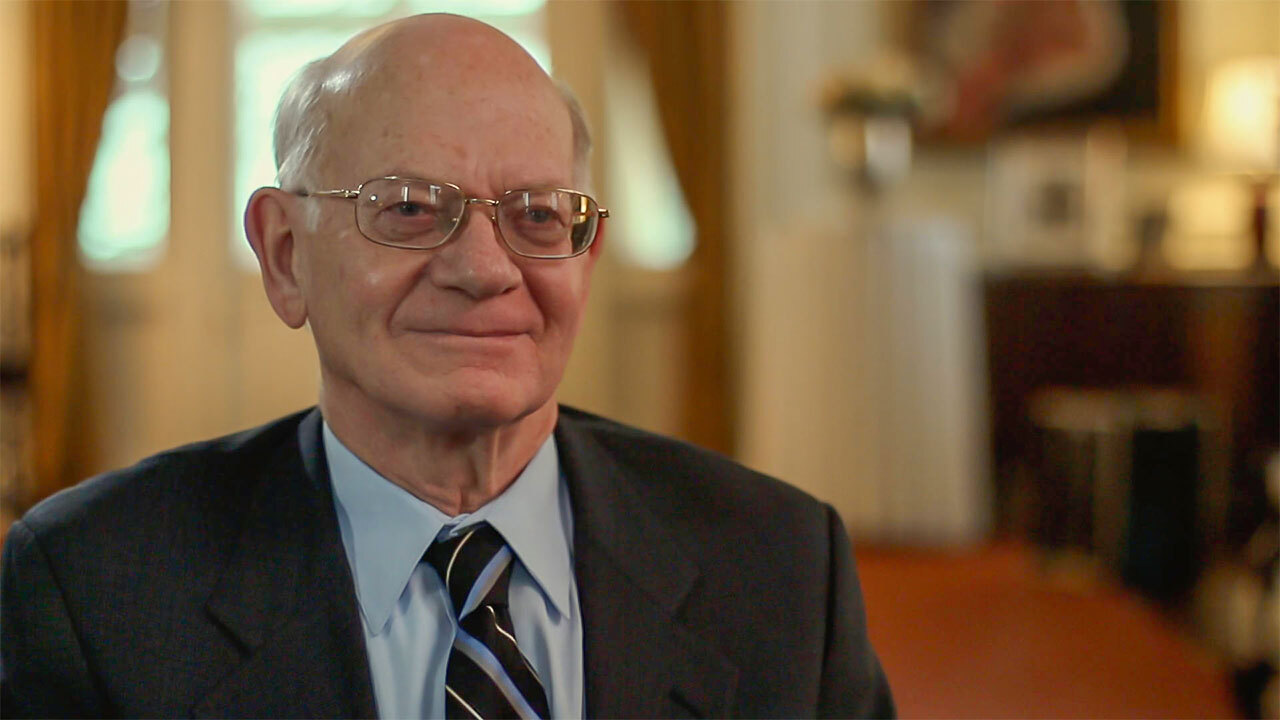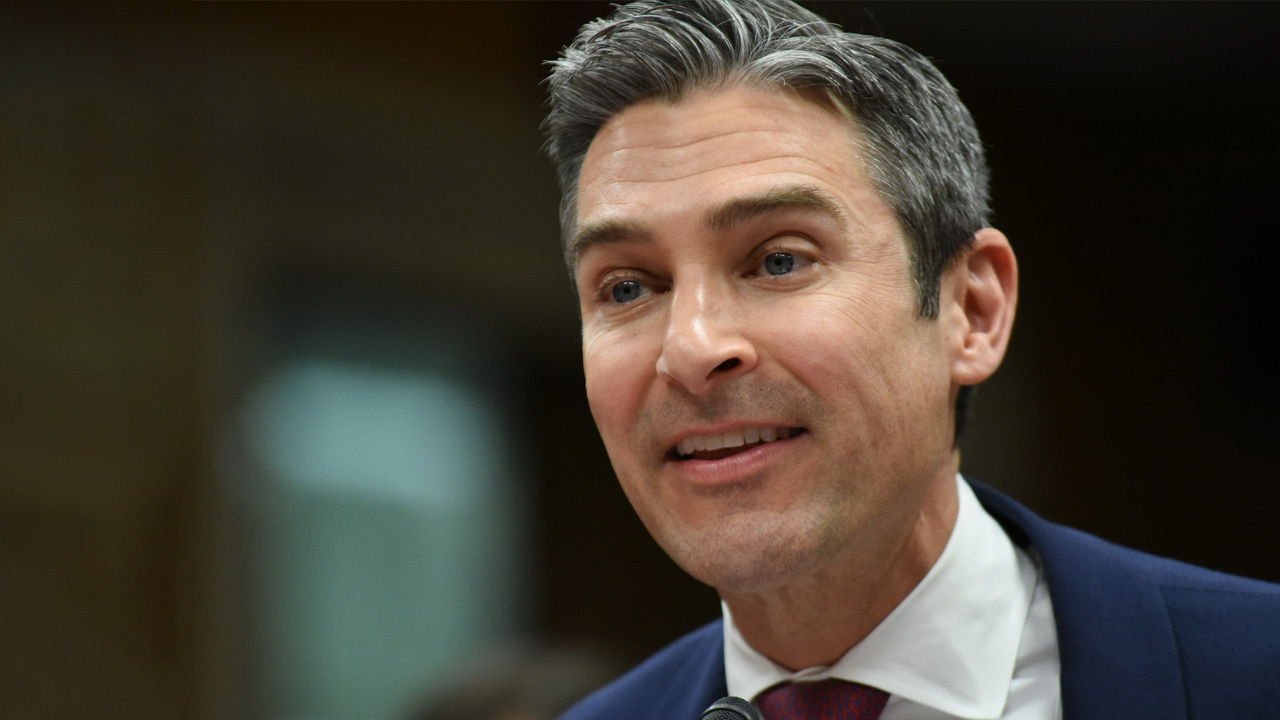Sheesha Media’s interview with Sughra Setayesh
Interviewer: Nasreen Hussaini
Nasrin: Good day, esteemed audience.
Today, I am pleased to introduce Ms. Sughra Setayesh, a highly accomplished Afghan filmmaker and actress. Ms. Sughra Setayesh received her degree in Cinema from Kabul University’s Faculty of Fine Arts.
Sughra Setayesh: Thank you, Ms. Hosseini. Greetings to our valuable viewers, wherever they may be. I hope this message finds them in good health and spirits. My name is Sughra Stayesh, and I am a filmmaker from Afghanistan. In 2014, I graduated from the Faculty of Fine Arts at Kabul University, where I studied cinema and filmmaking.
A Child with an Artistic Flair
Nasreen: Ms. Setayesh, could you share your journey to where you are now? It must have been quite a challenging journey! Could you tell us about your childhood and how you developed an interest in cinema?
Setayesh: I was born in Iran and grew up in the bustling city of Qom. I completed my primary and high school education in Iran before heading to university in Kabul. As for my passion for cinema and the arts, it all started with my love for stories as a child. I distinctly remember when I was in the fourth or fifth grade, the first book I read was a storybook. Before that, I had been an avid reader of various stories from the school library; however, the first book I read at home was Mehdi Azar Yazdi’s “Good Stories for Good Children”. It was a book my older brother had brought home, and I read it enthusiastically. From then on, my love for reading grew exponentially, particularly for storybooks. After reading countless short stories, my thirst for reading led me to novels. I vividly recall reading Victor Hugo’s “The Hunchback of Notre Dame” shortly after completing “The Black Tulip”.
As time passed, my love for novels and storybooks only grew stronger, and even to this day, I still cherish the experience of reading a great work of fiction. When I was studying in Iran, our high school curriculum was designed so that we could choose our field of study in the second year. Despite the various options available, including humanities, math-physics, experimental, and art, the latter truly piqued my interest. Unfortunately, during those years, Afghan immigrants were prohibited from pursuing their artistic passions and attending art schools.
Because of my lifelong love for literature and stories, I was compelled to pursue a path in the humanities. However, this choice was at odds with my true passion for the arts, a field I could not pursue. As I progressed through high school, I was left with a profound sense of regret as my Iranian friends were able to attend art school and follow their artistic dreams.
I would inquire about their schooling and high school experiences whenever I encountered them. They would wax poetic about their courses and the abundance of hands-on work, leaving me longing. In the autumn of 2010, following the conclusion of my secondary education, I migrated to Afghanistan. A handful of months later, I sat for the Konkur exams, and in 2011, I was accepted into my desired field of study.
Before joining the School of Art, I had already gained some knowledge in the field of art. I had worked on painting during my school years and had developed a considerable amount of skill. However, I must admit that before taking the university entrance exam, I had no clue about the School of Art or any other art-related fields at Kabul University. At that time, I was not particularly concerned about which area to choose; all I wanted was to continue my studies, something that had been denied to me in Iran, where I could not pursue my preferred major and make the right career choice.
A few days before the university entrance exams, we were instructed to visit the college where we were to take the test to avoid becoming lost on the day of the exam. My sister and I were scheduled to take the test simultaneously and went to Kabul University. Our test location was the Faculty of Agriculture, accessed through the southern gate. As we walked just a few steps ahead, we were greeted by a stunning edifice on the left-hand side, bearing the name “Faculty of Fine Arts” emblazoned on its grand gate. The sight of this magnificent building and the knowledge of the faculty within filled me with indescribable joy. It was as though the world had been given to me, and I knew in my heart that this was where I was meant to be. At that moment, I felt I was on the brink of fulfilling my lifelong dream.
On the day of the Konkour exam, I selected only one field of study – the Faculty of Fine Arts. Back then, there was no option to choose a specific major. I had to pick the faculty I desired and choose Fine Arts.
After passing the Konkour exam, I entered university and was required to select a major. I did not initially consider cinema since I lacked the background and mindset in the field. However, one thing was sure – I had an immense passion for art. It isn’t easy to believe, but I loved all forms of artistic expression – from sculpture and painting to graphics and beyond. Thus, determining which path to pursue was a severe challenge.
Like everyone else, I considered the job market and other important factors, including societal acceptance in Afghanistan. Though I contemplated music and various other fields, I ultimately concluded that cinema encompassed my interests. As such, I chose cinema as my major.
Fine Arts Student
Nasreen: Have you sought advice on whether or not to pursue a major?
Setayesh: I consulted my family and mother in Iran then. I was drawn to music and painting. While I believed my painting skills were strong, my mother advised against it due to the limited job market, especially in Iran. She encouraged me to pursue music but ultimately left the decision up to me.
I eventually set aside music and turned my attention to other art majors. The graphic design appealed to me, but it was an intensely competitive field then. Success often depended on connections and influence rather than merit. Ultimately, my strong painting skills helped me pass the entrance exam for painting. During the interview process, I demonstrated my understanding of graphics, painting, and related fields. Sadly, I was not accepted due to my lack of connections in the painting major, and I lost my chance at graphic design.
After much deliberation and research, I realized that my career path lay in a field that would provide me with a sense of purpose and fulfillment while offering opportunities for growth and progress. As I consulted with my brother and family members and explored various options, I found myself drawn to the world of cinema.
Having entered the world of cinema, I encountered a perspective vastly different from that of Afghan cinema, where Iranian and global cinema reign supreme. Despite the limited facilities and lack of established film industry, my passion for art drove me to persevere through the difficulties. Initially, I approached this new realm without a clear mindset, unsure what direction to take.
Questions about the exact point to start, the type of film to create, the story to tell, and the roles of acting and directing may flood your mind. However, these concerns were not initially my primary focus, and I was not obsessed with such issues. But it is natural to have such questions in mind.
At the outset, I was thoroughly bewildered. Such a predicament is likely shared among cinema students who find themselves lost in the vast sea of course offerings. However, I soon began to reflect upon my aspirations, seeking clarity amidst the tumult of this demanding field. Indeed, the path ahead would be fraught with challenges and obstacles, yet I remained steadfast, determined to persevere in the face of adversity.
Thankfully, my family was supportive of me, but I often found myself questioning my path. Initially, I was confused, but with each passing day, I grew more acquainted with my chosen field of study. Gradually, I began to find the subject matter increasingly beautiful and intriguing until it reached a point where I found myself completely enamored with it.
My journey in the world of art began through theater acting. I was given my first role in a play. I felt at ease in that production because I could express myself. The freedom and comfort of that experience gave me the courage to perform in front of hundreds of people on stage.
There was something about those days that made them special to me. I found myself at ease on stage because the cinema had not yet taken on the weighty significance it would later hold, or maybe because the atmosphere was pure delight, where every moment was a work of art and a pleasant surprise. Or perhaps I was too excited and warm to analyze everything around me.
The occasion of my first performance was the Law School Auditorium, where over a hundred people, including students of all faculties and professors, had gathered to watch. To my delight, the audience was appreciative and complimentary, even though this was my debut show. Many were surprised that it was my first time, as the performance captivated and entertained them with its compelling allure.
Those days were when I was brimming with enthusiasm and eagerness to perform. However, we faced a challenge: we needed a practice stage. As first-year students, we could only rehearse our performance one or two times on the busy theater stage of the Faculty of Arts. Our lack of experience and resources made it difficult to take us seriously. With this in mind, I implored my teammates and friends to practice at home. Despite being relatively unfamiliar with one another, we came together and transformed my humble abode into a space for rehearsal and preparation.
Our performance met resounding success, and to my delight, I was presented with an appreciation certificate. The experience was engaging and invigorating, marking a pivotal moment in my early years at the School of Arts. Our subsequent production, more serious in tone and duration, was showcased at the sixth or seventh student theater festival at the School of Fine Arts. Once again, it was warmly received and applauded, paving the way for me to venture into cinema acting eventually.
Successful Acting
Nasreen: Ms. Setayesh, would you have continued acting if you hadn’t received encouragement? And how effective were these encouragements?
Setayesh: Although I was always interested in acting, the field was not yet open. The presence of women and ladies in acting was, unfortunately, or fortunately, relatively low, allowing me to perform whenever it arose. Perhaps one of the reasons my friends encouraged me was due to this shortage of women and girls in acting. Like everyone else, I, too, enjoyed being encouraged and appreciated.
People often remarked that I acted naturally, and I am unsure why the audience felt this way. I would have to ask them. Nonetheless, my enthusiasm, interest, and determination to become an artist and carve out a place for myself in the art world were crucial in this work!
Nasreen: You were dazzling on stage, despite the scarcity of female actors. I was impressed with your performance, and you certainly deserved all the praise you received!
Setayesh: I hope your words are valid.
Nasreen: Of course they do. So, what have you been up to since graduation or during your four years as a student?
Setayesh: After acting in two theater performances, I garnered some recognition among students of cinema, theater, and fine arts. From there, I gradually made my way into the film industry. During my second year of university, I acted in several student films, and by my third year, I had directed my first film, Facebook.
During that period, Afghan students, youth, and citizens were evident in society, particularly on social media platforms like Facebook. Their social interactions, friendships, and activities developed rapidly, generating great excitement.
However, many problems were exacerbated on these platforms, and unfortunately, this had become commonplace. One such problem was the improper or abusive use of virtual spaces, which was on the rise. It remains a serious issue today but was particularly challenging during that time.
The issue of technology misuse in underdeveloped countries is a significant concern. In countries like Afghanistan, technology was introduced before the culture of using technology had become established, creating problems for many young people who needed to learn how to use it. Even today, many people still struggle to use the internet, phones, and virtual space.
As we grappled with this problem, I decided to turn it into a story and create a film. This was Facebook Film’s genesis, which marked my first foray into this field.
Nasreen: I did watch that movie and thought it was a good start.
Setayesh: At the time, I was a third-year university student. While the movie certainly had its flaws, I found its concept intriguing. However, it needed further development. I directed my film the following year, but during that time, I was also heavily involved in group and academic activities.
I participated in various theater activities with fellow students and colleagues, but my true passion lay in filmmaking. I was determined to pursue my studies and my craft simultaneously.
I must confess that I was highly involved in acting during college and had the privilege of featuring in various films. As time went by, I became increasingly busy with acting, as making a film requires a team of experts who can handle the intricacies. From filming to lighting, sound recording, scene design, costume and makeup, acting, location scouting, and special effects, every aspect of filmmaking demands a specialized set of skills that a single individual cannot handle. This is why teamwork is essential in cinema, as it takes a team to bring a vision to life.
One of the benefits of participating in student activities is the opportunity to collaborate with others. For instance, I acted in my friends’ films, and, in turn, they lent their talents to my productions. This mutual exchange of skills allowed us to expand our horizons and learn from one another.
As we progressed through college, our cinematic activities continued to grow, and we collaborated with various groups. I worked behind the scenes in makeup, lighting, stage management, and other roles. Through trial and error, we gained invaluable experience and moved forward as a team. Looking back, it was a genuinely enriching time in our lives.
Challenges of Cinema and Acting in Afghanistan
Nasreen: When starting, all filmmakers faced the challenge of needing enough budget to hire a technical team, such as a cinematographer, sound engineer, lighting designer, or makeup artist.
Setayesh: We had to rely on teamwork, which was the right decision. While at the university, I directed two short fiction films and gained valuable experience in acting. After graduation, I continued to act in films and theater productions. Overall, I have played roles in over thirty short films at university and afterward. Additionally, I have performed in approximately ten theater productions, which was an enriching experience honing my acting skills.
I had only completed two short fiction films when I graduated college and was still determining my next steps. Unfortunately, there are several significant challenges facing aspiring artists in Afghanistan. Firstly, students need the opportunity to mature and gain sufficient experience during their studies, leaving them unprepared to navigate the industry after graduation. Secondly, Afghanistan’s cultural landscape and societal attitudes towards art are often crude and superficial, making it difficult for artists to thrive amidst the social and cultural taboos that permeate the country. Artists must contend with an unsupportive society often dismissive of their craft, discouraging them from pursuing their dreams. Many people believe that art only appeals to those who are downtrodden, but this is not true. Afghanistan has yet to fully embrace the transformative power of art, failing to establish a national cinema dedicated to promoting this medium. As a result, we have yet to find our place in cinema, unable to penetrate people’s minds, tastes, and thoughts. Until we can create a culture that values and celebrates cinema, aspiring artists in Afghanistan will face significant obstacles.
Nasreen: This issue is particularly challenging for women.
Setayish: Certainly. If a woman is a filmmaker, artist, or actress, she will likely face twice as many difficulties as a male filmmaker. This is what led me to the world of documentary filmmaking.
While I graduated from university as a film director, we didn’t have any courses in documentary filmmaking. We only took a short semester course, which sparked something within me that I later pursued. Afghanistan needed a documentary filmmaker, particularly a female one. In traditional Afghan society, the presence of a male filmmaker or cinematographer can pose issues in many places. In contrast, a female filmmaker can easily access her subjects and provide much-needed insight.
With so many unique subjects, untold stories, and numerous problems in Afghanistan, I was naturally drawn to documentary filmmaking. I felt compelled to share a small part of these concerns and problems with the world.
Nasreen: During your talk, you mentioned that you did not have the opportunity to study documentary filmmaking in depth during your time at university. What steps did you take to become a successful filmmaker in this genre?
Setayesh: Unfortunately, when studying at Kabul University, I saw no coursework or program dedicated to documentary filmmaking. Even after I graduated, this field remained largely unexplored. I had two options: pursue an academic program or attend various workshops and classes. Unfortunately, these options were not readily available, and there was a dearth of educational resources in this field. Therefore, I sought opportunities to attend documentary filmmaking classes and workshops in person and online. My first workshop was held in Morocco and consisted of three courses. Each course provided me with invaluable experiences and knowledge. As a beginner in documentary filmmaking, this was an excellent start for me.
Women Documentary Maker
Nasreen: What topics have you focused on in your documentaries?
Setayesh: In my fictional work, I strive to address social issues, but in my documentary filmmaking, I reflect on the issues that I want to express and the problems that I want to address in my community. In my research and investigations, I am drawn to shine a light on the vast and underprivileged segment of society, particularly women, and their struggles. Women are prominent in most of my documentaries, where I aim to give voice to their experiences and their pain.
Nasreen: How many documentaries have you made so far? Do you remember in which years they were made and what experiences you gained during their production?
Setayesh: I have produced seven documentaries, two filmed in France and the remaining five in Afghanistan. In 2016, I submitted a documentary proposal called “Skiing Girls” to the “Japan Prize” program, a Japanese initiative. My submission won, and I received the UNESCO special award. With the support and encouragement of this festival, I produced a film about skiing girls titled “Skiing in the Land of Buddha”. This film was completed in 2017, marking the start of my journey as a documentary filmmaker. Since then, I have produced two documentaries each year, with two films filmed in 2020, two in 2021, and the remaining two filmed in France in 2022.
Nasreen: Do you have your movie titles in mind?
Setayesh: Yes, I have directed several fiction films, including Facebook, 2013 and Silence, 2014, as well as a range of documentaries, including Skiing in the Land of Buddha, 2017; In the Land of Jamilah, 2019; Gray Moments, 2020; For My Mother, 2021; Evacuation, 2021; Season of Longing, 2022; August Tales, 2023; and Gray (about the veil), 2019.
I have also acted in various theater performances, including Unsung Love; Adam and Eve; Little Prince (pantomime); Shireen; and Loneliness, among others, and appeared in over thirty short films.
In addition, I was awarded Best Actress in the International section of the Belgian Online Film Festival in 2018 for my work in the film Habibeh.
Nasreen: Your work is truly admirable. Could you tell us about some challenges you faced during filmmaking, especially as a female filmmaker?
Setayesh: There were many challenges we encountered as filmmakers. One of our biggest obstacles was the need for funding and support. We had to manage the budget from our reserves, making difficult sacrifices and prioritizing our goals. Although our passion for filmmaking fueled us, we knew we needed additional resources to bring our work to a broader audience.
We also faced the challenge of finding a platform to showcase and sell our films. As female filmmakers, breaking into the industry can be particularly challenging. We knew we needed an international center to give us the exposure to succeed.
Filmmakers, like all artists, pour their hearts and souls into their work. But how long can they sustain themselves on passion and personal interest alone? A painter may spend their own money on a canvas, hoping that one day it will be sold and they will be compensated for their expenditure. But if that day has yet to come, how long can they continue to create and store paintings?
We needed a platform to showcase our work and products, but unfortunately, the opportunity to sell films was unavailable. This was a widespread problem, not just for women but for everyone.
It was exceedingly rare to see women in film, particularly acting. A persistent challenge was the shortage of female actors. When contemplating a new film project, the primary question was always where to find an actress. And even when a suitable candidate was found, they often lacked professionalism and reliability. Additionally, finding an actress of a particular age proved to be an arduous task. Filmmakers were forced to be tenacious and unyielding in the face of these challenges. To the uninitiated observer, it appeared effortless, but those familiar with the industry knew of the countless obstacles that had to be surmounted.
Nasreen: Were women not interested in acting? What was the main problem?
Setayesh: The foremost impediment was the negative societal view and attitude towards artistic activities, especially cinema, and acting. Women who took up acting were labeled as sinners and transgressors. Unfortunately, women, especially female actors, were perceived in a derogatory light. Consequently, women had a minimal presence in the field.
In filmmaking, the longstanding issue is the underrepresentation of women in critical roles, such as cinematographers and directors. As a documentary filmmaker, I was acutely aware of this issue when I began my career. In particular, the lack of female cinematographers was a significant concern of mine.
Unlike in fiction films, where actors are willing participants in front of the camera, documentary filmmakers must often rely on real-life subjects who may be hesitant or unwilling to be filmed. This can be incredibly challenging when the cinematographer is male, as the female subject may feel uncomfortable expressing their emotions or sharing their story. In these situations, having a female cinematographer can be a valuable asset, as they may be better able to establish a rapport and capture intimate moments on camera. Unfortunately, the shortage of female cinematographers made it challenging to find the right person for the job, ultimately leading me to take on the role of cinematographer myself.
Subsequently, I recorded all of my films, save for my debut production, Ski. Whether crafting documentaries or fiction, filmmaking always presents a difficult challenge, a formidable obstacle, and a high hurdle to surmount.
One of the most daunting challenges we faced after graduation was finding employment. Despite our four years of study and hard work, we felt our degrees were meaningless. Unfortunately, the job market for filmmakers was almost non-existent, except for the Afghan Film, which could accommodate some.
No other institutions were willing to offer jobs to filmmakers and provide them with a productive work environment, which was a significant concern for us after graduating. We were so consumed with the employment search that we forgot about the challenges of filmmaking. At times, we even questioned why we had pursued art in the first place. In reality, graduation marked only the beginning of our misfortunes. We were left with the difficult task of searching for work in a field without opportunities.
The Role of Women in Afghan Cinema
Nasreen: What has been and will be the role of women in Afghan cinema?
Setayesh: It is no secret that women have no prominent place in the art world, particularly in cinema. Despite significant efforts in recent years, their impact has been limited. Yet, there is still hope for a brighter future. The most pressing question for our artistic and cinematic community is how, when, and in what manner we can bridge the divide between people and art. To achieve this, we must first identify the underlying problems and sources of pain. We must understand why society has been less than receptive to cinema and filmmakers. We can begin to address the pains and challenges only after we have examined them. Given the current situation in our country, discussing cinema and art can feel like an exercise in futility.
Some stakeholders have made efforts in the country to address these challenges, although they may have been insufficient. The College of Arts has played an instrumental role in fostering and creating opportunities for women in the arts field. In recent years, the presence of women has been more promising than in the past. We hope their participation will continue to improve in the next five to ten years, and society will become more accepting of their artistic endeavors.
Our main challenge remains the need for more women’s representation in society. While the present situation may not be encouraging, we remain hopeful. The efforts of filmmakers and artists in recent years have been more promising than in past years, and we hope these efforts will continue and become even more prominent.
Our society faces a significant challenge – the absence of women. While I am dissatisfied with the current state of affairs, I hold onto hope for a better future. Recent efforts from filmmakers and artists, though not without difficulties, have brought a renewed sense of hope to our community. As filmmakers, we are committed to ensuring that our work continues to thrive.
Fortunately, we do not need to be physically present in Afghanistan to carry out our filmmaking activities. As members of the Afghan diaspora, we have an even greater responsibility to keep Afghan cinema alive. We cannot allow this beloved art form to falter or fade away.
To truly appreciate the power and beauty of art, particularly in cinema, one must be a filmmaker, an artist, and a true connoisseur. It is a sublime and exalted expression of love for one’s homeland. Through this medium, one can explore the most profound issues and concepts and solve the most significant social challenges and problems. It is a tool that no power, book, or sermon can ever match.
Cinema possesses a value and power that is often underestimated. The force and imagery of film are more potent than ever, especially in today’s world. We must embrace artists, filmmakers, and documentary makers, for they are the true storytellers of our time. They can help us overcome the challenges we face as a nation through fiction and imagery.
For months, we gathered weekly with our filmmaker friends and those interested in film criticism to review our works. This experience has invigorated my artistic endeavors. My husband, Mr. Kian, ran the Academy of Arts and Cinematic Sciences in Afghanistan for over twenty years, where we organized the Mehrgan International Film Festival. We held five cycles of the festival in Kabul and were preparing for the sixth cycle when everything fell apart with the fall of Kabul.
Nasreen: May I ask a personal question?
Setayesh: Of course, please do.
Nasreen: Is your marriage connected to your art? Did your passion for art lead you to marry Mr. Kian?
Setayesh: To some extent, yes. Through my art, I became acquainted with the Art Academy, and later this acquaintance led to our marriage. My first activity with the Art Academy was the Mehrgan Film Festival. I became involved in the festival’s second year, eventually leading to our acquaintance.
Nasreen: What is your perspective on the lives of two artists who are married to each other?
Setayesh: Sometimes, it feels like we are living in a scene from a movie. In my view, every couple, whether both artists or belong to the same profession or any profession, should have a positive and beneficial impact on one another. I am grateful that we have had this positive influence on each other and have been able to support each other in our artistic endeavors.
Nasreen: Have you ever served as a judge for any competitions?
Setayesh: My first experience as a judge was at the International Mehrgan Film Festival in Kabul, where I was a member of the film selection committee. Afterward, I had the opportunity to serve as a judge at the first Bamyan Film Festival. In 2022, I was also a judge in the film selection section of the Japan Prize Festival, held online.
Nasreen: What are you currently working on in France?
Setayesh: The French Performing Arts Center has provided a platform for Afghan artists recently arriving in France. We are currently residing in Normandy. They have brought together artists from several cities in Normandy to collectively perform a theater show, reintroduce themselves to the people, and resume their artistic activities in the wake of the fall of Kabul. Our show is scheduled for August 15th and will continue to be performed in various cities in France. Additionally, on April 1st, our show is expected to be performed in Paris.
Nasreen: Thank you for taking the time to speak with us. It was a pleasure getting to know you better.
Setayesh: The pleasure was mine. Thank you for your invitation and kindness. God bless you.








